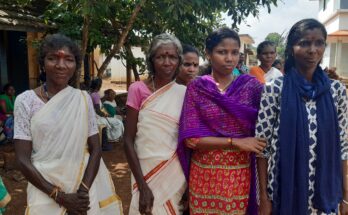“All young people, regardless of sexual orientation or identity, deserve a safe and supportive environment in which to achieve their full potential.”
Harvey Milk
June is famously celebrated as Pride month. Pride Month occurs in the United States to commemorate the Stonewall riots, which occurred at the end of June 19691. As a result, many pride events are held during this month to recognize the impact LGBTQ+ people have had in the world.
Let’s understand what exactly is pride.
Pride is a social movement that promotes the self-affirmation, dignity, equality, and enhanced visibility of lesbian, gay, bisexual, transgender and other (LGBT+) persons. It aims at making people aware of the biological diversity of humans and that we cannot split ourselves into only two groups. We are who we are, and we ought to be proud of who we are and what we represent.

Pride activities, which can range from solemn to carnivalesque, are often organised during LGBT Pride Month or another period that marks a watershed moment in a country’s LGBT history, such as Moscow Pride in May commemorating the anniversary of Russia’s 1993 legalising of homosexuality.2 LGBT pride parades and marches, rallies, commemorations, community days, dance parties, and festivals are examples of pride events.
Some terminology basics are essential to comprehend the LGBTQ+ society. Gender identity refers to a person’s perception of being male (a man or boy), female (a woman or girl), or another gender (e.g., transgender, bigender, or genderqueer—a rejection of the traditional binary gender definition).3 Gender minorities are people who identify as a gender other than their biological sex.4 Sexual orientation is defined as a persistent pattern or disposition to have sexual or romantic attractions for, and interactions with, people of the opposite sex (heterosexual), the same-sex (homosexual), or both sexes (bisexual).5 Individuals who identify as something other than heterosexual are considered sexual minorities.6 Individuals who belong to these groups are collectively referred to as LGBTQ (sexual and gender minorities). However, it is critical to understand that these groups are not homogenous.
Since the dawn of the internet age, the idea of LGBTQ+ equality has reached almost all points of the globe. A good number of social media pages, papers, groups etc., all exist with the help of the internet. This has helped us gain a direct connection with the present youth and spread the message of equality and love since the biggest consumers of modern technology are the youth. However, these technologies still have a long way to go in eradicating myths about the community. And the conservative attitudes that persist in many families give a lot of difficulties in helping the LGBTQ+ youth that might be present there. Conversion therapy and abuse in the name of conservative ideas give this youth hell on earth. Therefore, we must envision a path of progress that is more equal in providing a safe place for everyone, including the LGBTQ+ youth. This affluent and independent youth can help immensely.
Sexual minorities exist in almost all parts and levels of our society. The pride community alone can’t make the biggest change for everyone. That is where the allies come in. We must note that being an ally can also be taken as being part of Pride because the basic idea of pride is to be proud of who you are. But unfortunately, some thoughts sometimes point out that only LGBTQ+ people are part of pride and that everyone else is “normal”. This is not true. What makes it a bit worse is when it is some members of the pride community itself that say these. If we could call them far-pride activists, one won’t be surprised. It is like Yin and Yang. A dark side always exists. And it is important to avoid these thoughts when we envision a bright future.
So what can all the youth do for their peers, who might need help irrespective of whether they are part of pride or not? The belief that there is no normal must be emphasised, and that pride belongs to everyone, not just the LGBTQ+ community.
It is important to understand that our orientation doesn’t have to be fixed either, and we could be on the questioning stage for quite a long time. This mustn’t undermine anyone in any way. If they require support at any stage, they must be helped.
The idea of fixed masculine and feminine standards is what needs to be eliminated next. Even with feminism, a good amount of people tend not to follow the feminist way for the LGBTQ+ folks. One must understand this undermines the very core value of feminism; all are equal. Discrimination can be faced in terms of getting housing, employment etc. And certain social constructs such as the colour blue for boys and pink for girls also exist. These are small ways the world of discrimination slowly opens up as one gets matured. It is fascinating how much some powerful people in the past have thought about discrimination, time that could have been spent on making this world a better place.
Another important idea is that of culture change. Culture will change over time. It has changed in the past, and the culture we have today won’t last long. We must therefore put away how culture is paramount, much say. Humanism comes before any culture. Discrimination should not be a part of any culture, and if it is, then that culture can be deemed inhumane.
The youth must ensure the equality of everyone, from the small to the big, light to heavy, young to old, and every other combination that we see around.
We are all unique. We should be proud of who we are. There isn’t a specific normal. Beauty exists in our differences and cannot be judged based on our imperfections.
Miller, Shawn. “About | Lesbian, Gay, Bisexual, Transgender and Queer Pride Month.” Library of Congress, https://www.loc.gov/lgbt-pride-month/about/. Accessed 2 July 2022. ↩
Kaczyński, Lech. “Moscow Pride.” Wikipedia, https://en.wikipedia.org/wiki/Moscow_Pride. Accessed 2 July 2022. ↩
Morrow DF (2006). “Sexual Orientation and Gender Identity Expression.”. In Morrow DF, Messinger L (eds.). Sexual orientation and gender expression in social work practice: working with gay, lesbian, bisexual, and transgender people. New York: Columbia University Press. pp. 3–17 (8). ISBN 978-0-231-50186-6. Archived from the original on 2021-12-19. Retrieved 2021-12-19. Gender identity refers to an individual’s personal sense of identity as masculine or feminine, or some combination thereof. ↩
Sullivan, Michael K. (2003). Sexual Minorities: Discrimination, Challenges, and Development in America (illustrated ed.). Haworth Social Work Practice Press. ISBN 9780789002358. OL 8151801M. SUMMARY. This chapter explores the cultural, religious, and sociological underpinnings of homophobia and intolerance toward homosexuals. ↩
“Sexual Orientation & Homosexuality”. American Psychological Association. 2020. Archived from the original on February 16, 2019. Retrieved February 6, 2020. ↩
Sullivan, Michael K. (2003). Sexual Minorities: Discrimination, Challenges, and Development in America (illustrated ed.). Haworth Social Work Practice Press. ISBN 9780789002358. OL 8151801M. SUMMARY. This chapter explores the cultural, religious, and sociological underpinnings of homophobia and intolerance toward homosexuals. ↩



